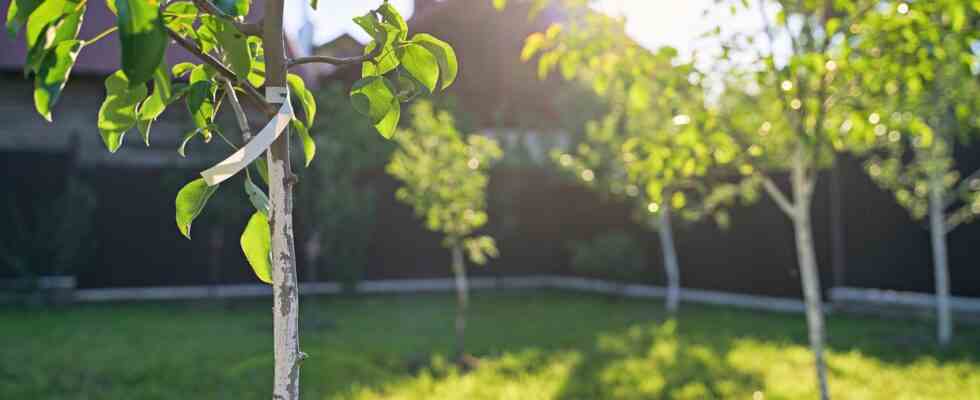Why can a tree lean?
Here are some of the circumstances that can cause a tree to lean:
- If you live in a particularly windy regiontrees can lean under the effect of repeated attacks from the wind or a storm.
- It may be due to the layout of your landif it is on a slope for example.
- If you live in a area exposed to spray, the salt contained in them burns the buds of the branches facing the sea, while those facing the land continue to develop. This leads to an imbalance in the weight of the tree and its inclination.
- If you planted your tree in the shade of another tree or anything else that shades it, it will naturally push towards the light and take a leaning look. Trees need photosynthesis to grow properly.
Can a tree be straightened?
A tree can be straightened while he is still young. Indeed, a few years after you planted it, it is still establishing its root system. Thus, a young tree which has no not complete its anchoring to the ground can be rectified. So you can consider that during the first 5 yearsit is possible to straighten it.
Beyond that, the root system will be too stable and you risk deforming the tree. To know if you have a chance to straighten your tree, try to force on the trunk, if your force is not enough to straighten the tree, even a little, it means that the tree is too big to be corrected.
How to straighten a leaning tree?
It is possible to straighten a leaning tree by using staking.
The recommendations
- You must ensure that the staking nevertheless allows the tree to move in the wind. If this is not the case, it would lose its natural flexibility in the trunk and would then be weakened.
- The guardian must be adapted to the size of the tree and firmly anchored to the ground to withstand the weather.
- Above all, he should not not slow the growth of the tree, which means you should not only adjust it as the tree grows, but also avoid leaving it too long. As soon as the tree is upright, it is essential to remove the staking structure, because if you leave it in place for more than two years, you risk weakening the tree.
The method
Depending on the size of the tree, the method will be different:
- For a small tree with a trunk up to 5 cm in diameteryou will need 1 stake and a ratchet strap inserted in a rubber tube to avoid injuring the trunk:
- About 50 cm from the trunk and on the opposite side to which the tree is leaning, tilting it slightly in the opposite direction.
- Wrap the strap around the trunk about 50m high and pull both ends of the strap towards the stake, then tie them tightly around the stake. Using the ratchet, tighten the loop using the ratchet until it acts on the inclination of the tree.
- Check the tree week after week and tighten the strap as soon as it feels looser.
- For a larger tree with a trunk diameter between 5 and 10 cm, you will need 3 stakes and 3 straps. The only difference with the previous description is that you will need to plant 3 angled stakes instead of just one, about 2 meters from the trunk and on the opposite side to which the tree is leaning, then install three straps.
- Beyond 10cmguying is required, but this is a much more complex task.
Should a leaning tree be felled?
If a tree is leaning dangerously towards a house or a passageway, it may be necessary to cut it down, for security measure. One of the signs that should encourage you to consider slaughtering quickly is the fact that roots come out of the ground. This means that the anchorage is no longer assured and that the tree begins to uproot itself and will no longer be able to resist the wind.
If the tree is leaning, but it is isolated and does not present any danger in the event of a possible fall, it is possible to leave it and wait. If you decide to cut down a leaning tree, it is recommended to call in a professional.
Prevent a tree from tilting
When you plant a tree, it is possible to tutor him to encourage him to push straight, but the use of staking must remain moderate, because if it allows the tree to grow in the right direction, it also generates in it a certain laziness in terms of anchoring to the ground. Indeed, you should know that when a tree grows, it is the movements caused by the wind that signal to it that it must better anchor itself in the ground.
Therefore, here are two recommendations regarding staking:
- If you install a tree on level ground with little wind exposureit is then useless to stake it because by systematically installing a stake, you will have, in the end, a less solid tree.
- If you are staking a young treeyou must remove the stake after a maximum of 2 years.

